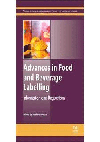Address corrosion in 'stainless' steel
A corrosion-related training program should focus on prevention first

Stainless steel is generally the most preferred and most commonly used material in the design, construction and fabrication of food processing equipment and is specified in 3-A Sanitary Standards. 3-A Sanitary Standards most often reference Types 304 and 316, or their low-carbon versions. The advantages for food contact are widely recognized, including corrosion resistance, high strength, formability, ease of fabrication and relatively low cost.
Not corrosion-proof
Stainless steel’s corrosion resistance is due to its protective outer chromium oxide layer (passive layer). However, all common grades of stainless steel are prone to corrosion where the outer protective layer is altered through continued exposure to certain atmospheric conditions. The most common forms of corrosion in stainless steel are:
Uniform corrosion: caused by prolonged exposure to dilute acid or alkaline solutions, or by acute exposure to more concentrated acid or hot alkali.
Pitting corrosion: more localized corrosion caused by exposure to chlorides, bromides and other halides, especially under conditions of high temperature or low pH.
Crevice corrosion: occurs where there are crevices in a surface (e.g., under gaskets, incomplete or improper welds), especially where acidic materials remain stagnant.
Stress corrosion cracking (SCC): caused by stressing of materials, either during manufacture or under conditions of physical stress or rigorous usage (e.g., agitators and other moving parts, tankers). SCC may be accelerated by continuous exposure to high-temperature solutions containing chlorides.
Galvanic (e.g., bimetallic, electrolytic) corrosion: caused by the flow of electric current where two dissimilar metals are in contact.
Contact corrosion: occurs when small particles of foreign matter (especially carbon debris) are left on a stainless-steel surface during manufacture. Contact corrosion may lead to galvanic or pitting corrosion.
Biological and microbiologically influenced corrosion: caused by residual biological materials (e.g., microbial biofilms, food soil). Highly oxidizing bacteria will attack the surface of the stainless steel, accelerating pitting corrosion reactions.
An ounce of prevention
The most effective way to prevent corrosion is to “engineer it out” by selecting the appropriate material for the food application, especially for high-acid, high-salt or high-temperature environments, and by enhancing the knowledge base of employees. The 3-A Sanitary Standard for General Requirements, ANSI/3-A 00-01-2018, is an indispensable reference when it comes to specifying product contact materials, particularly stainless steels. This standard references the applicable composition ranges for the acceptable corrosion resistance of metals in the environment of their intended use, including cleaning, sanitizing treatment and/or sterilization. Free e-learning modules available in the 3-A SSI Knowledge Center also address materials and cleaning.
Coordination with the supplier of equipment or cleaning systems and materials is essential in planning corrosion-related training. Your training program should delineate the risks of inappropriate chemical concentrations and temperatures, specify how to avoid corrosion and outline procedures to remove corrosion once formed.
Preventative maintenance programs should address the potential implications of corrosion on food contact surfaces through routine equipment inspection, with follow-up procedures for handling corrosion before it gets severe. When making modifications involving welding, it is critically important that the welding be performed by trained and certified stainless-steel welders.
Common mistakes made by food-handling employees include using sanitizers at inappropriate concentrations, following the erroneous assumption that “if a little is good, more is better,” or allowing stainless-steel components to “soak” in a sanitizer solution for prolonged periods of time. It is critical that the supplier’s recommendations be followed when using sanitizers, as well as detergents.
Note: The content for this column was adapted from “Corrosion Considerations with Metal Materials” by R. Schmidt and H. Piotter, as well as Food Protection Trends, Vol. 32, No. 10, pp. 574-584, “Characteristics of Food Contact Surface Materials: Stainless Steel” by R. Schmidt, D. Erickson, S. Sims and P. Wolff.
Looking for a reprint of this article?
From high-res PDFs to custom plaques, order your copy today!







